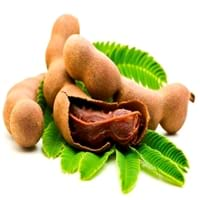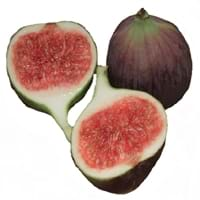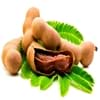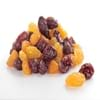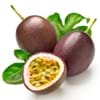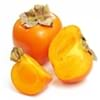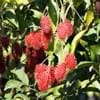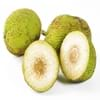Health Benefits
Boosts immune system, Boosts respiratory health, Cancer prevention, Digestive aid, Piles treatment
Cancer prevention, Controls blood pressure, Heart care, Increase in haemoglobin, Prevents constipation, Prevents macular degeneration, Reduces nervous tension
General Benefits
Beneficial in improving nerve function, Protects against parasites and worms, Relieves pain
Controls blood pressure, Helps in weight loss, Maintains healthy cholesterol level, Strengthens bones
Skin Benefits
Anti-aging benefits, Brightens and lightens complexion, Exfoliates skin, Hydrates skin, Treatment of dark spots
Brightens and lightens complexion, Hydrates skin, Skin rejuvenation, Treatment of acne
Hair Benefits
Prevents hair loss
Good conditioner, Regulates hair growth, Softening mask
Allergy Symptoms
Abdominal pains, Breathing difficulty, Dizziness, Eczema, Fainting, Hives, Itching, Nasal congestion, Swelling of face, Tingling sensation in mouth, Vomiting
Abdominal pains, Anaphylaxis, Coughing, Headaches, Hives, Itching, Nasal congestion, Skin rash, Sneezing, Sore throat, Swelling of hands
Side Effects
Decrease in blood sugar levels, Induces acid reflux, Allergic reaction, Tooth decay, May form gallstones
Allergic reaction, Skin rash, Possibly unsafe during pregnancy
Best Time to Eat
Along with meal, As a snack in the late afternoon, Don't consume at night and before bed, Strictly avoid empty stomach
Best if taken as a breakfast (or empty stomach), Don't consume at night and before bed, Morning time (before lunch)
Vitamin B5 (Pantothenic Acid)
Vitamin C (Ascorbic Acid)
Vitamin K (Phyllochinone)
Calories in Fresh Fruit with Peel
Not Available
Calories in Fresh Fruit without Peel
Not Available
Calories in Canned Form
Not Available
Season
Spring, Summer
Summer, Winter
Varieties
PKM 1, Urigam, Hasanur, Tumkur prathisthan, DTS 1 and Yogeshwari
Abyad, Adriatic, Alma, Atreano, Bataglia, Black Bethlehem, Black Madeira, Black Mission, Brown Turkey, Sierra, Calimyrna, Kadota, Deanna, Figoin and Hardy Chicago Fig
Color
Brown, Reddish-brown
Green, Purple, Red
Shape
Curving Cylinder
Conical
Origin
Africa
Western Asia
Soil Type
Loam, Sandy, Sandy loam, Well-drained
Clay, Limestone, Loam, Sandy
Climatic Conditions
Humid to dry, Rainfall, Warm to hot climate
Dry, Warm
Facts about
- Tamarind is used to prevent body odor.
- African children use the tamarind seeds in games.
- No cases of tamarind toxicity or allergy reported till date.
- Fig tree is considered as a symbol of abundance, fertility and sweetness.
- The fig is made up of 55% of natural sugar so they are the sweetest fruits.
- Figs are used as a fat substitute in recipes.
Top Producer
India
Turkey
Other Countries
Africa, Australia, Brazil, China, Mexico, Nigeria, Sudan, Taiwan
Albania, Algeria, Brazil, Egypt, Iran, Morocco, Syria, Tunisia, United States of America
Top Importer
United States of America
France
Top Exporter
Thailand
Turkey
Botanical Name
Tamarindus indica
Ficus carica
Synonym
Tamarindo, tamarindus
Not Available
Subkingdom
Tracheobionta
Tracheobionta
Division
Magnoliophyta
Magnoliophyta
Class
Liliopsida
Magnoliopsida
Subclass
Rosidae
Alismidae
Species
Tamarindus indica
Ficus carica
Generic Group
Tamarind Sub
Mulberry
Compare Tamarind and Fig
It is important compare Tamarind and Fig as both the fruits have a different nutritional value. Their comparison can be done on the basis of their vitamin and mineral content, calories, benefits as well as characteristics, making it easier for us to choose the best fruit for our diet. Their general health benefits are as follows:
Tamarind Benefits: beneficial in improving nerve function, protects against parasites and worms and relieves pain.
Fig Benefits: controls blood pressure, helps in weight loss, maintains healthy cholesterol level and strengthens bones.
Fruits are also used as a remedy for various hair problems. The hair benefits of Tamarind are: prevents hair loss and hair benefits of Fig are: good conditioner, regulates hair growth and softening mask. Some fruits are known to cause allergic reactions. The allergy symptoms of first fruit are: abdominal pains, breathing difficulty, dizziness, eczema, fainting, hives, itching, nasal congestion, swelling of face, tingling sensation in mouth and vomiting and the symptoms of second fruit are: abdominal pains, anaphylaxis, coughing, headaches, hives, itching, nasal congestion, skin rash, sneezing, sore throat and swelling of hands. Get sorted Tamarind vs Fig comparison with the help of fruit comparison tool by fruitvs.com.
